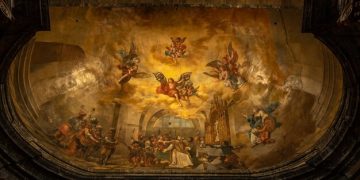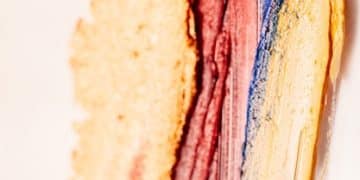Unearthing Forgotten Masterpieces: A Journey Through Art History
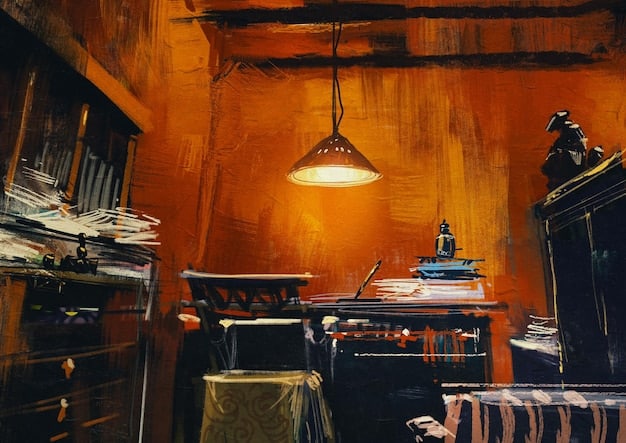
Unearthing forgotten masterpieces involves rediscovering and appreciating overlooked or neglected works of art, often revealing hidden stories and challenging conventional art historical narratives, contributing to a richer understanding of cultural heritage.
The art world is full of untold stories, hidden beneath layers of time and neglect. Unearthing these forgotten masterpieces offers a unique opportunity to rediscover artistic brilliance and challenge prevailing narratives. Join us on this journey to explore some of art history’s overlooked treasures.
The Allure of Forgotten Art
Why do some works of art fade into obscurity while others achieve enduring fame? The reasons are multifaceted, ranging from shifts in taste and patronage to historical circumstances and curatorial decisions. Exploring the allure of forgotten art invites us to question these dynamics and consider the value of works beyond the established canon.
Rediscovering these pieces allows us to broaden our perspective, celebrating the diversity of human creativity.
The Role of Taste and Patronage
Artistic taste is subjective and evolves over time. Works that were once celebrated may later fall out of favor, while others initially dismissed may gain recognition. Patronage also plays a crucial role, as artists often rely on the support of wealthy individuals or institutions to create and promote their work.
Historical Context and Circumstances
Historical events, such as wars, revolutions, and economic depressions, can significantly impact the art world. Social, political, and economic shifts can affect artistic styles, subject matter, and cultural values.
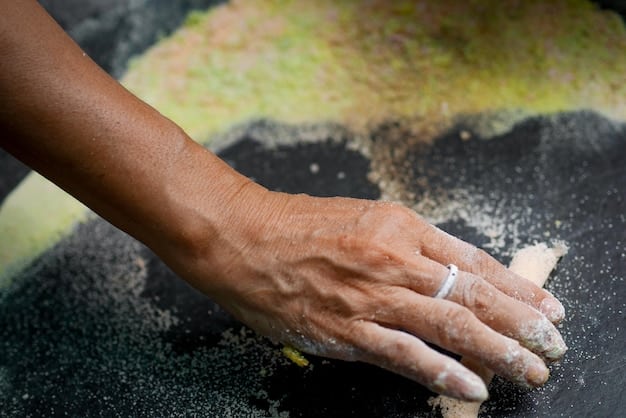
The allure of forgotten art lies in its ability to challenge our current views and help us see the art world in a new light.
- Rediscovering unique perspectives overlooked by mainstream art history.
- Appreciating diverse artistic styles that have been marginalized.
- Understanding how historical circumstances influence artistic creation.
- Recognizing the subjective nature of artistic taste and value.
Unearthing forgotten art reveals more than just a single piece. It sparks an entire journey of historical and creative rediscovery.
Lost Canvases and Hidden Sculptures
Many masterpieces have been lost or hidden over time, often due to damage, theft, or simply being forgotten in storage. These lost canvases and hidden sculptures represent a painful void in art history, leaving us to wonder what might have been.
However, the hope of rediscovery remains alive, fueled by ongoing research, archival efforts, and technological advancements.
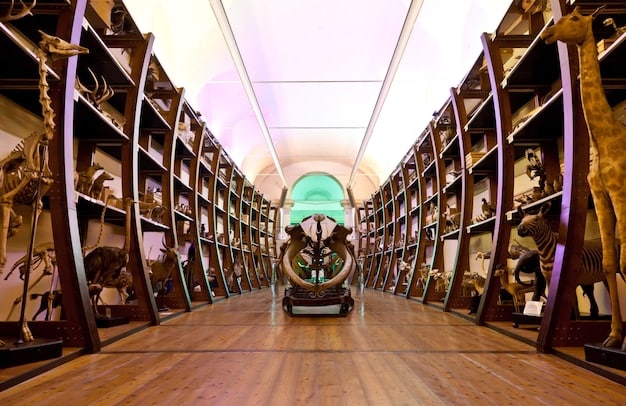
The possibility of uncovering lost treasures drives researchers to scour archives and forgotten collections. New techniques shine light on canvases previously deemed insignificant.
The journey to rediscover these hidden works is full of perseverance.
- Digitization of archives to improve access and searchability.
- Advanced imaging technologies to reveal hidden layers and details in paintings.
- Collaboration among art historians, conservators, and scientists.
- Increased public awareness and interest in art historical research.
These efforts collectively contribute to the preservation and renewed appreciation of artwork that might otherwise remain lost to time.
The Impact of Rediscovery
When a forgotten masterpiece is rediscovered, it can have a profound impact on the art world and beyond. Beyond the intrinsic value of the artwork, rediscovery contributes to a more inclusive, accurate, and engaging understanding of art history.
Rediscovered items add to the collective human story, creating a ripple of appreciation and curiosity.
Reshaping Art Historical Narratives
The rediscovery of a significant artwork can challenge existing art historical narratives and prompt a re-evaluation of established assumptions. It can reveal previously unknown artistic influences, connections, and trends, reshaping our understanding of a particular period or movement.
Inspiring New Generations of Artists
Forgotten masterpieces can serve as a source of inspiration for contemporary artists, offering fresh perspectives, techniques, and ideas. This cross-generational dialogue enriches the creative process and fosters a sense of continuity within the art world.
When a lost piece is found, it’s a victory for art historians and enthusiasts with hope to find these lost artifacts.
The impact of rediscovery is not merely about uncovering the past, but about enriching the future of art and culture.
The Role of Technology
Technology plays an increasingly vital role in the unearthing and preservation of forgotten masterpieces. From advanced imaging techniques to digital archiving, technology is providing new tools and resources for art historians, conservators, and researchers. Technological processes greatly assist in identifying, restoring, and sharing these significant works.
Digitalization leads to a broader impact, making art more accessible and better understood.
These modern technologies are reshaping the landscape of art preservation.
- X-ray and infrared imaging to reveal hidden layers beneath the surface of paintings.
- 3D modeling and printing to recreate lost or damaged sculptures.
- Digital archiving and online databases to improve access to art historical resources.
- AI-powered tools for analyzing and attributing artworks.
The ongoing advancements in technology promise to unlock new possibilities for art discovery and appreciation.
The Preservation Challenge
Once a forgotten masterpiece has been unearthed, the challenge of preservation begins. Conservation efforts are essential to protecting these delicate works from further deterioration and ensuring their long-term survival. Each piece requires specific care, and these efforts are crucial for the art world.
Conservation ensures future generations can also appreciate unearthed masterpieces.
Ethical Considerations in Conservation
Conservation involves complex ethical considerations, such as determining the appropriate level of intervention and balancing preservation with restoration. Conservators must also consider the historical and cultural context of the artwork, as well as the wishes of the artist (if known).
The Science of Conservation
Conservation is a science that relies on a variety of techniques and materials to stabilize, clean, and repair artworks. Conservators use advanced analytical methods to identify the composition of pigments, varnishes, and other materials, allowing them to develop appropriate treatment strategies.
Preservation goes beyond simple repair; it involves a comprehensive understanding of the artworks’ history, composition, and cultural significance.
Preservation allows the intrinsic properties of a discovered piece to live on forever.
Inspiring Hope: Success Stories
Several remarkable success stories illustrate the potential for rediscovering forgotten masterpieces. These tales of perseverance, discovery, and restoration serve as inspiration for art historians, conservators, and enthusiasts alike. Success stories motivate others and are important to share.
These stories give insight into the effort involved in finding lost pieces from the art world.
Rediscovery shines light on the amazing possibility of these stories.
- The rediscovery of Caravaggio’s “The Taking of Christ” in a Jesuit residence in Dublin.
- The identification of a long-lost Leonardo da Vinci painting, “Salvator Mundi,” which became the most expensive painting ever sold at auction.
- The unveiling of hidden frescoes in a Roman villa, shedding new light on ancient Roman art and culture.
These success stories remind us that the art world is full of hidden treasures, waiting to be unearthed.
| Key Point | Brief Description |
|---|---|
| 🎨 The Lure of Forgotten Art | Cultural, historical, and artistic values shift over time, leading to some pieces being lost. |
| 🔎 Lost Canvases & Sculptures | Rediscovering canvases and sculptures, with tech helping, aids insight into history. |
| 💡 Impact of Rediscovery | Reshaping art narratives & inspiring new artists, enriching art history. |
| 🛡️ Preservation Matters | Careful preservation is key to ensuring the artwork survives in good condition.. |
FAQ
▼
A masterpiece can be forgotten due to shifts in taste, lack of patronage, or historical events that cause it to be overlooked or lost to time.
▼
Technology like X-ray imaging and digital archiving helps to reveal hidden details, reconstruct damaged works, and make resources accessible to researchers.
▼
Preserving rediscovered art helps to protect them from further damage, ensuring its long-term survival for future generations to appreciate and study.
▼
Rediscovering art pieces challenges narratives, offers new perspectives, can reshape understandings of an era or movement, enriching the cultural landscape.
▼
Ethical considerations include the level of intervention, balancing preservation with restoration, and respect of the historical and cultural context of the original artists intent.
Conclusion
The journey of unearthing forgotten masterpieces is a testament to the enduring power of art and the importance of cultural preservation. By rediscovering and appreciating these treasures, we not only enrich our understanding of the past but also inspire new generations of artists and art lovers. As technology advances and art historical research continues, the potential for further discoveries remains vast, promising a future filled with even more untold stories and hidden gems from the art world.
